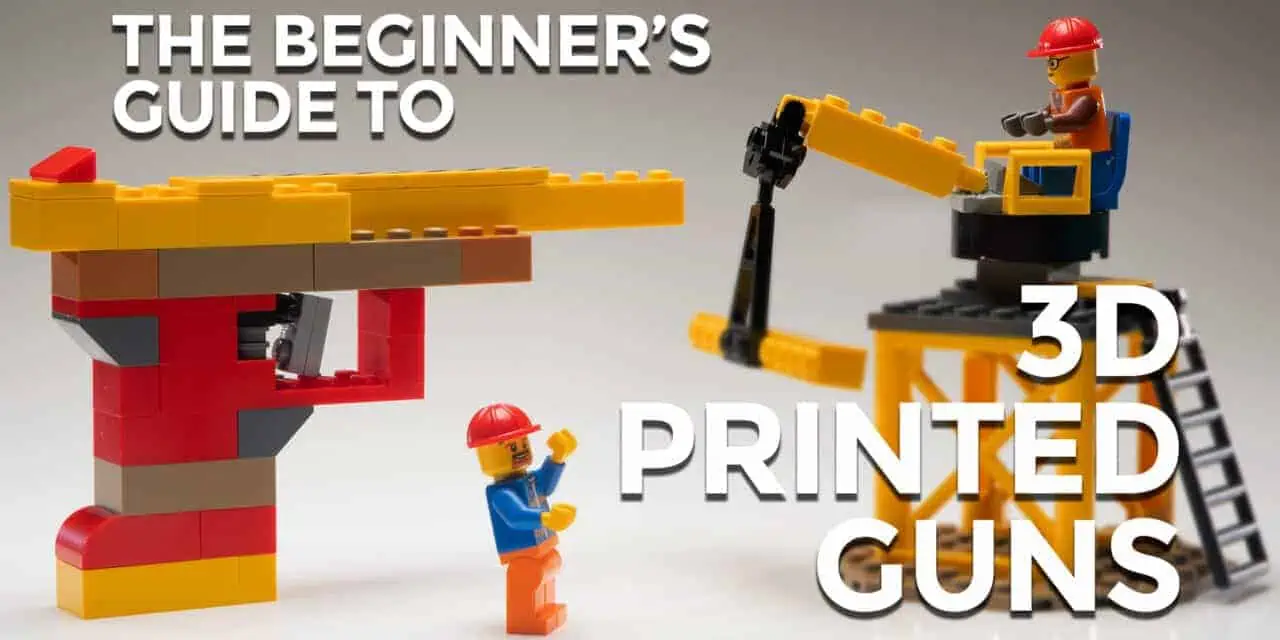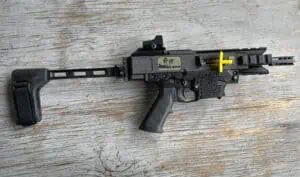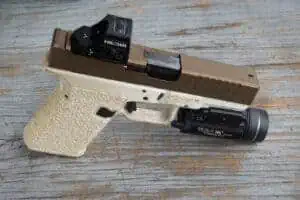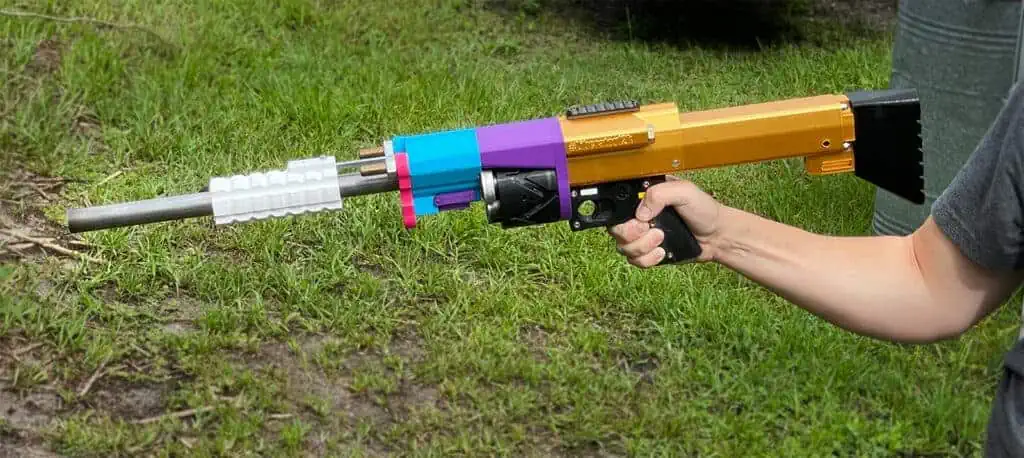Homebrew Pew Pew Pew: The 3D Printed Gun
Americans have always made their own guns. The tradition of homebuilt firearms is older than the country itself. It started with craftsmen in the towns of Pennsylvania and Kentucky creating iconic long rifles. It continued even though guns became mass produced in factories. Thousands, if not millions of guns, were “sportized” after World War II. This process converted them from battlefield implements to hunting and self defense firearms. Now, that tradition continues with the growing interest in 3D printed guns.
3D Printed Guns Fast Facts:
- The barriers to enter the world of 3D printed guns fell dramatically over the last ten years
- The reasons why people make 3D printed guns are almost as varied as the guns you can make
- 3D printed guns vary from small pistols to AR-pattern rifles and even shotguns
3D printing itself has been around for quite some time now. Hideo Kodama invented the first 3D printer in 1981, which used a polymer that required ultraviolet light to harden the printed material. 3D printing of metal parts using a process called selective laser sintering (SLS) and other processes soon followed. Manufacturers quickly saw the advantages of a machine that could rapidly create prototypes of upcoming products. 3D printing established itself as a vital part of the research and development process.
3D printing went mainstream right after the turn of the 21st century. The expiration of key patents as well as the ability to spread designs and ideas over the internet led to new, lower-cost 3D printers as well as new designs to create.
New ways to create products led, in turn, to a quest for new applications of those products, which in turn led to people exploring the idea of 3D printed guns.
New Technology Means New Kinds Of Guns
Advances in technology shouldn’t come as a surprise, because new gun technology and new innovations in manufacturing processes go hand in hand. The introduction of mass production led to Samuel Colt’s revolver as well as the brass cartridge case. Eugene Stoner used his experience creating modular parts for the aerospace industry to build the AR-15. Gaston Glock’s familiarity with high-strength polymers came in handy during the development of the first Glock pistol.
In essence, 3D printing makes this process even easier, allowing the average person to create a firearm literally on their kitchen table, which harkens back to an earlier tradition of making guns. The first guns made in America weren’t built in a factory. Factories as we know them today didn’t exist in the 17th century. Rather, craftsmen built those guns one at a time. They created guns that reflected their heritage and values and took pride in making something with their own hands. Not surprisingly, those same passions are driving the people who create the 3D printed guns of today.
That passion is what I encountered at the inaugural Maker’s Match, a shooting competition devoted solely to 3D printed firearms.
50 contestants participated in the match. They shot various combinations of pistols, rifles, and shotguns, all of which were created using 3D printing. The world of 3D printed guns currently revolves around communicating on online forums found on apps such as Matrix, Rocket Chat and Discord. As such, we’ll only use their first names to respect the privacy of the competitors at the match.
Who Are The People Who Are Making The Guns?
“Creating a gun this way is all about the mental challenge and personal satisfaction,” said a competitor named Darren, who goes by the handle of “Derwood” on the 3D printing forums. ”It’s not about circumventing the laws, because all of us here can buy just about anything we want. It’s about making something with your own hands and seeing it perform on the range. That’s what I enjoy the most.”
Derwood is well-known in the world of 3D printed guns. He is the creator of 3D printed gun designs like the Shuty-MP1, AP9, WTF9 and Cobra pistols. All of these guns use a blowback action and are built using a 3D printed receiver to hold commonly-obtainable gun parts such as an AR-15 trigger group and a Glock pistol barrel. They then assemble the guns with nuts, screws and bolts from a hardware store, and a new firearm is born.
“This is my latest design, the King Cobra,” Derwood said, obviously proud of his handiwork. “It takes the design of the Cobra pistol and adds a recoil management system, which is a secret for now. A blowback gun requires a heavy bolt to hold the action closed as the bullet flies down the barrel. The weight of that bolt means a lot of felt recoil, so adding a recoil management system results in a more accurate gun.”
Another competitor, Cory, had a pistol that looked, acted, and felt just like a Glock 19, one of the most-common pistols in America. I asked him how he got into 3D printed guns, and how hard it is for other people to join the hobby.
Getting Started In 3D Printed Guns
“I grew up around 3D printing,” Cory said. “My dad worked in 3D printing for years, and I started using printers to build guns about four years ago. Getting started in all of this is easier than ever, almost anyone can do it. Printers start at around $200, and there are instructions on how to set up your printer and how to get started in 3D printing at places like Are We Cool Yet. Once you can print something, making a gun is pretty easy.”
“The most common material to use is PLA+, Polylactic acid. It costs just over $20 a kilogram (about nine dollars a pound) and is easy to use, but not resistant to heat,” Cory went on to say, “The frame of a PLA+ gun can warp if it heats up to around 150 degrees Fahrenheit. This means you’ll need to take care if you keep your guns in your car on a summer day, or if you send a lot of rounds downrange without cooling off your barrel.”
“3D printed nylon handles heat better,” Cory continued, “but it is difficult to use in your printer. It comes out of the nozzle of the printer at a hotter temperature, and the difference in temperature between the material and the surrounding environment can cause your design to warp. Ultem 9085 is also strong but it also needs a hotter work environment. The best way to avoid warping when working with these materials is to use a heated enclosure around your printer which prevents the newly-printed part from the sort of rapid cooling that causes warping.”
Function First. Form, A Little Bit Later On.
Jeff from Liberator12K was also at the match, showing off his new pump-action, revolving cylinder 3D printed shotgun. He had more information on resources for people who are new to the world of 3D printed guns.
“I’ve been in the 3D printed gun community for 7 years, since 2014,” Jeff said. “I bought a 3D printer because it was cool technology. My original plan was to see what kind of guns I could make using parts from a hardware store, but 3D was easier and better, so I switched to that. A 3D printer is, in essence, a poor man’s CNC machine, and it can do quite a lot.”
“When you’re starting out, Controlpew.com is a good place to look for design files,” Jeff continued. “Start with something like a Glock kit or the FGC9. Those are common designs in the community, and there are lots of people who can help you be successful with your first build.
“I like to think about what I’m doing as a ‘political art project,” Jeff went on to say, “The laser printer or your computer keyboard is your way of exercising your freedom of speech. The 3D printer and the at-home crafting of guns does the same for the Second Amendment.”
How Much (3D) Bang For Your Buck?
There are three things to keep in mind if you’re interested in using a 3D printer to make a gun for yourself. The first is that gun companies conduct extensive testing programs to make sure the guns they sell are safe and reliable. With a 3D printed gun, you are your own testing and development program. The reliability of the guns I used at the match varied. I saw some guns that ran flawlessly, and I saw some that went “click” instead of “bang.”
The second thing to keep in mind is the time and money you’ll spend creating your own gun. Printers themselves start at around $200 and quickly go up from there. The cost of the plastic itself is very cheap, but the cost of the other gun parts such as triggers, slides and barrels can quickly approach the cost of a preassembled gun from a major manufacturer.
Lastly, the Bureau of Alcohol, Tobacco, Firearms and Explosives (ATF for short) has noticed all the activity around 3D printed guns, and are proposing some drastic changes to the legal definition of a gun as a response. The current law defines a firearm as the part of the gun that holds the trigger group. This is why an AR-15 lower is the part of the gun you actually buy. These new rules would change that, expanding the legal “firearm” part of any gun to include the barrel, slide, trigger group or many other parts. You’d need to register and transfer each of these parts under the new rules. That brings 3D printing of guns (and indeed gunsmithing of any kind) to a crashing halt. The Federal Register is taking comments on these proposed rules on their website.
Changing The World, One 3D Printed Gun At A Time
Today’s interconnected world was built on the shoulders of the personal computer revolutions of the late 170’s and early 1980’s. Hobbyists and hackers drove things forward, computers weren’t sold in discount stores back then. They’d meet twice a month in church basements or talk to each other on bulletin boards and help each out find out ways to make those often-cantankerous early computers work the way we wanted them to work.
The world of 3D printed guns that I saw at the Maker’s Match reminded me of those heady, pre-internet days. All of us struggling to make VisiCalc work correctly or writing programs in BASIC knew that someday, what we were doing was going to change the world. The fact that you’re reading this on a device that’s connected to the Internet proved that we were right.
Will 3D printed guns do for self defense what the internet has done for self-expression? Maybe. The idea that “Information wants to be free” was a driving force during the early days of the internet.
“Self defense should be done by one’s self” might just be the next big idea to come along.






